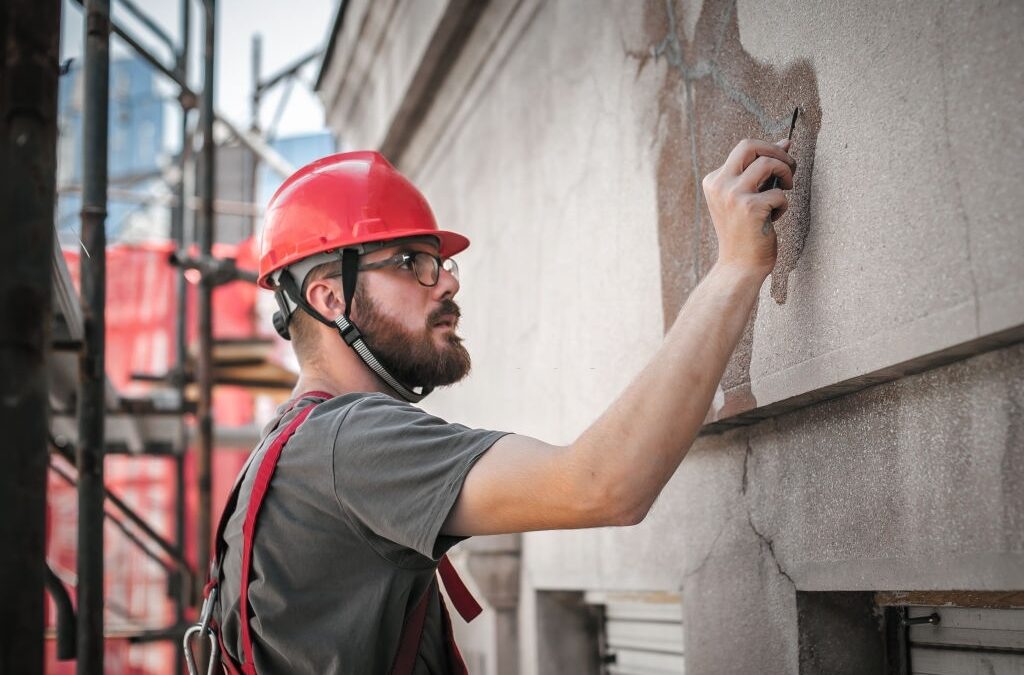You might have noticed cracks emerging with time if you have a concrete driveway. These cracks can be unappealing and hazardous if left unattended. But fret not. Repairing a crack in a concrete driveway is simpler than you might think. With the correct equipment and materials, you can effortlessly fix the damage and restore your driveway to its former glory.
We are here to guide you through repairing a crack in a concrete driveway. We will discuss the different types of cracks, how to prepare the surface for repair, the appropriate repair method and materials, how to apply the repair compound, and finally, how to finish and seal the repaired crack. Following these instructions, you can repair the crack in your driveway and stop further damage, ensuring that your driveway remains strong and secure for many years.
Identifying the Type and Severity of the Crack
If you spot a crack in your concrete driveway, don’t worry. The first step is to determine the type and severity of the crack. Various types of damages may appear, and each one requires a distinct approach for repair. Hairline cracks are small and insignificant to the structure but can be unsightly. Shrinkage cracks may occur randomly due to concrete drying too fast, but they are not a significant concern.
However, if you notice a crack wider than 1/2 inch or with uneven driveway settling, it might indicate a serious issue requiring professional assistance. Several factors, such as soil erosion, poor drainage, or incorrect installation, cause structural cracks. These cracks can compromise the driveway’s integrity and require immediate attention. Once you know the type and severity of the crack, you can decide on the appropriate course of action to take and ensure the longevity of your driveway.
Preparing the Surface for Repair
To repair a crack in your concrete driveway, it’s important first to prepare the surface. Use a wire brush, broom, or vacuum to remove dirt, debris, or loose concrete. Ensure the area is spotless to ensure the patching material will bond properly. After cleaning, use a pressure washer to remove any remaining dirt or debris. Wait until the surface is dry before moving on to the next step.
To make it easier to fill the crack with the patching material, use a chisel or hammer and a chisel to widen it slightly. Remove loose or crumbling concrete around the crack and smooth the edges with a wire brush. If the crack is large, you may need a concrete grinder to level the surface. This will create a smooth surface for the patching material to adhere to. By properly preparing the surface, you can ensure a long-lasting repair.
Choosing the Right Repair Method and Materials
Select the appropriate materials and repair method to repair a damaged concrete driveway based on factors such as crack size and depth, weather, and extent of damage. Small cracks can be fixed with pre-mixed concrete patching compounds or water-mixed powders. Use a concrete mix containing gravel or aggregates and a bonding agent for larger cracks or holes to ensure adhesion. Follow the manufacturer’s instructions and wear protective gear when working with these materials.
Applying the Repair Compound
After selecting the appropriate materials, it’s time to apply the repair compound to your damaged surface. Start by cleaning the crack thoroughly using a wire brush or a pressure washer to remove debris, dirt, or loose concrete. Wait for the crack to dry completely before moving on to the next step.
You can apply the repair compound once the crack is clean and dry. Follow the manufacturer’s instructions carefully, as different compounds may have varying application methods. Some may require mixing with water or a bonding agent before application, while others may be pre-mixed. Use a trowel or putty knife to apply the compound and ensure that you fill the crack. Smooth out the surface of the compound with the trowel or putty knife, and let it dry according to the manufacturer’s instructions.
Finishing and Sealing the Repaired Crack
After adding the finishing touches and applying the sealant, your surface will look new and protected from future damage. To repair a crack in a concrete driveway, follow these steps: Firstly, use a trowel or putty knife to smooth out the repair compound to the same level as the surrounding concrete. Allow it to dry completely as per the manufacturer’s instructions. Once dry, use fine-grit sandpaper to iron out any rough spots or edges. Lastly, apply a concrete sealer to the driveway surface, not just the repaired area. Follow the manufacturer’s instructions for applying the sealer and wait for it to dry completely before using your driveway again. These final steps will make your driveway sturdy enough to withstand the weather and last for years.
Don’t let cracked and damaged concrete ruin the look and safety of your driveway. Our concrete company is here to help with our top-notch concrete services and experienced contractors. Whether you need to repair small hairline cracks or address more extensive concrete issues, our team has the skills and high-quality materials to get the job done right. Reach out to Gatlinbyrd Cement today and let our concrete contractors revitalize your concrete driveway, so you can enjoy a beautiful, sturdy surface for years to come.
Frequently Asked Questions
What are the signs that a crack in my driveway needs immediate attention?
Immediate attention is needed if the crack is wider than 1/2 inch, deep, or if there is noticeable uneven settling of the driveway.
Is it necessary to widen a crack before repairing it?
Yes, slightly widening the crack can help remove unstable concrete edges and create a better bond with the repair material.
What type of repair material should I use for small versus large cracks?
For small cracks, a simple concrete sealant or crack filler will suffice. For larger cracks, use a concrete patch mix that contains bonding agents and aggregates for stronger repairs.
How long does it typically take to repair a crack in a concrete driveway?
The repair itself can be quick, but the total time including preparation, application, and curing can take several days depending on the extent of damage and weather conditions.
When can I drive on my driveway after making a repair?
Wait at least 24 to 48 hours after the repair has fully cured before driving on it, depending on the specific product used.
How often should I inspect my driveway for cracks and reapply sealer?
Inspect your driveway annually and consider resealing it every 2 to 3 years to maintain its integrity and appearance.

